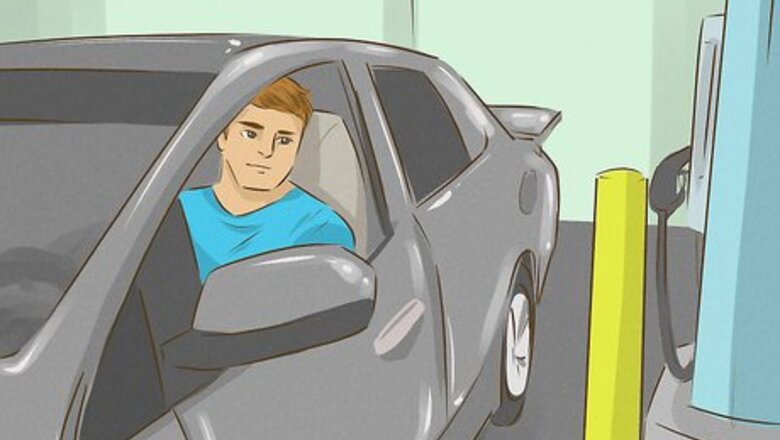
views
Paying for Gas
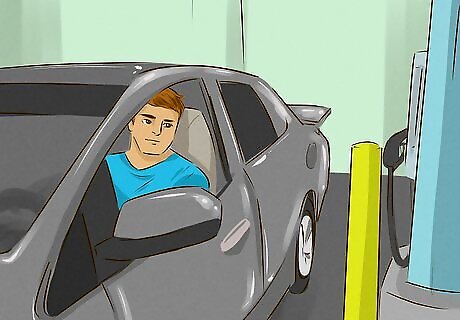
Pull up to any available pump. Pull up with your gas tank opening as close as possible to the pump, making sure you pull up on the correct side (your dashboard should feature an indicator displaying which side of your vehicle the tank is located on, if you aren't familiar). Since it's dangerous to pump gas with your car running, you need to turn off the ignition and get out of the car. Make sure you're at the correct variety of pump. Some pumps are designated for Diesel vehicles only, while some pump regular gas only, and some pump both. Pumps that pump both kinds of gas will have two nozzles on each side. Practice good pump safety. Before you pull up to the pump, put out any cigarettes that might cause a fire hazard around the gas and leave your cellphone in the car. Cell static has been linked to several gas station flare-ups.

Select your payment method and pay for your gas. You've got to pay for the gas before you select your variety of gas and pump it. You can pay with a credit or debit card directly at the pump, or with your card or cash at the counter inside. To pay at the pump, just slide your card to get started and follow the instructions. You'll likely have to select between debit/credit, and enter your PIN or your zip code to confirm payment. Some machines will prompt you to enter an amount. If you enter $20, the pump will cut off the gas when you've pumped $20 worth. If you want to fill your tank, just press enter to skip this step. To pre-pay inside, pay the attendant. You'll need to tell them how much gas you want to pay for, and the number of the pump at which you're parked. You can use either a card or cash. The cash amount you pay them will show up on the pump, which will cut off when you get to that amount. If you want to fill up your tank and pay in cash, you'll probably have to overpay, then pump your gas, and then return to the counter to get your change. This is common. Just tell the attendant you're going to try to fill it up, pay more than you think you'll need to pay, and go back to the counter for your change. If you're a member of any rewards or loyalty programs, insert your member card at this point (or prior to the credit/debit card; see the pump for instructions). This may net you a discount or add points to your balance at participating gas stations.

Remove the gas cap from your vehicle. To access the gas tank, you'll probably need to pop the door to the gas tank. Depending on your model, you might have to press a button inside to pop it, or just open it with your fingers and expose the gas cap. Unscrew the gas cap and set it somewhere safe, or let it hang if connected with a wire.
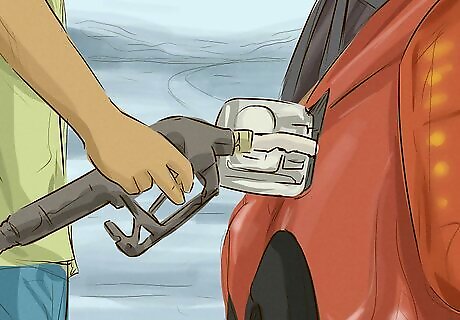
Remove the nozzle and insert it securely into the gas tank opening. On most machines, you need to remove the nozzle before the machine will allow you to select a variety of gas and start pumping. The safest way to do this is to remove the nozzle and immediately insert the nozzle into the gas port of your car, pushing it in until it sits snugly. If you see two nozzles at the gas pump, that means the pump supplies both diesel and regular. The Diesel nozzle is usually slightly larger and colored green, and the nozzle is usually too big to put into the port of a regular gas tank. Make sure you select the correct variety for your car--using the wrong kind of gas can ruin your engine. Pump nozzles are made to fit into your gas tank without you holding onto the handle while you pump. While you'll likely see lots of people holding onto the pump the whole time, this is unnecessary. Just make sure you've inserted it in fully and snugly and it should be fine.
Selecting Gas
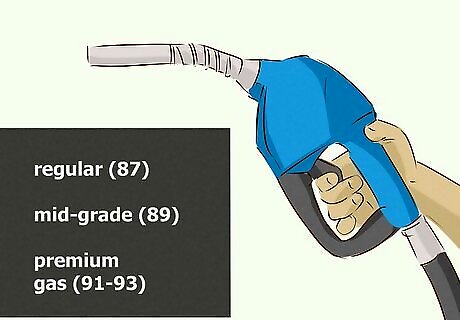
Select an appropriate grade of gasoline. On most gas pumps, you'll be able to select between three grades of gasoline, based on their octane rating: regular (87), mid-grade (89), and premium gas (91-93). Depending on the branding of the gas station these grades may have different names, but the octane rating is mostly universal. To determine the most-appropriate octane for your vehicle, consult the owner's manual of your vehicle. For most vehicles, regular or mid-grade gasoline is perfectly appropriate and even preferable. The octane rating refers to the amount of gasoline that can be compressed during the compression stroke before the gas is ignited. Lower-octane gas will ignite earlier, and higher-octane will ignite later in the stroke. Higher-octane gasoline is traditionally used in high-performance engines to prevent knocking and create horsepower. Higher-octane fuel prevents as much dirt, silt, or carbon build-up from developing in your fuel filters.

Make your selection by pressing the corresponding button on the pump. Each grade of gas will have a button you can press to select it. When you've made your decision based on octane-grade and price, select the variety of gas you'd like to use. On some older machines, there's a little seat on the bottom of the "holster" where the gas pump sits in the machine. Before you select a variety of gas and start pumping, you've got to flip it up. On newer digital machines, you're just doing this by pressing a button. Once you've activated the pump, you're ready to pick your gas and start pumping.
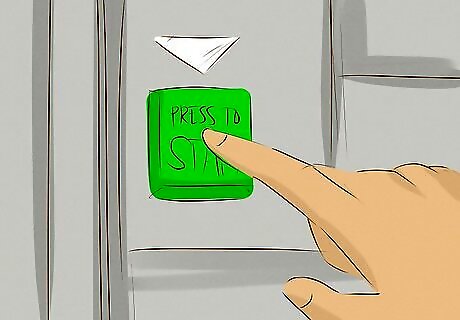
Press start. After selecting the variety of gas you want to pump, you'll probably need to press the "Start" button on most pumps. This will activate the gas and prime the pump, which means you'll be ready to start pumping your gas whenever you're ready. Look at the dial on the pump to make sure it goes back to zero. This will indicate that the pump is ready to go, once you've made your selection. As you pump, you can watch to see how much volume of gas is being added and the price.
Pumping Gas
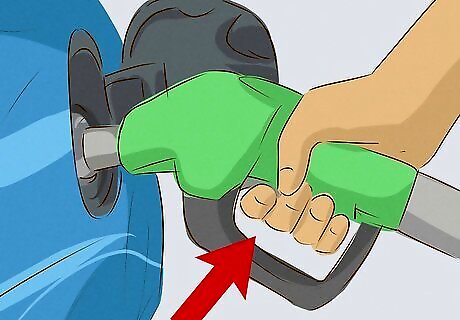
Pull the trigger on the pump to activate the gasoline. Squeeze the trigger on the pump nozzle gently, allowing gasoline to flow out of the hose and into your fuel tank. On most pumps, you can lock the trigger to let the gas flow continuously and make it easier on your hand. All modern pumps now have self-stopping mechanisms that will cut off the flow of gasoline when the tank becomes full, or when you've reached the amount for which you've pre-paid, whichever happens first. You'll hear a click when the tank is full, or when the machine cuts it off.

Consider cutting off the gas before completely filling the tank. There's some debate about the accuracy of the cut-off mechanism on some pumps. Some consumers believe that if you fill the tank to full, you're actually paying for more gas that flows back into the pump, unused. To avoid waste, keep your tank somewhere less than completely full. It's true that some stations have vapor recovery systems that feed back into the pump, used to recover gasoline, and also that gasoline expands some in the tank, making a super-full tank somewhat unnecessary and wasteful, both financially and environmentally.

Remove and replace the nozzle. Let the trigger return to its starting place and remove the nozzle from the tank, letting any last drips fall in. Return the holster tab to the "down" position, if you raised it, and replace the nozzle into the pump. It's common for a small amount of gas to drip out of the nozzle as you remove it, so be careful to avoid getting it on your shoes and clothes. If you should spill any on the side of your car, or around the gas port, there are usually paper towels available at the side of the pump that you can use to clean up the spilled gasoline. It isn't necessarily dangerous, but can emit an odor.
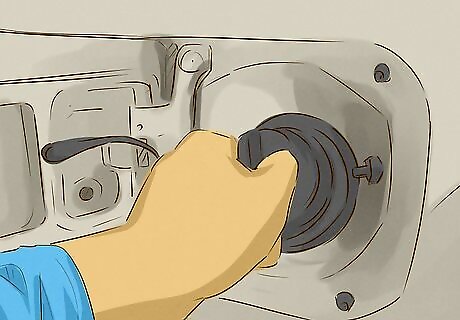
Recap your gas tank. Return the gas cap to its place and twist it closed until it clicks a few times, then close the door to the gas tank.

Accept or decline a receipt. At this point, the gas pump will probably be beeping. You can print a receipt to complete the transition, or press "No" to reject it. Depending on the gas station and your method of payment, you may need to return to the shop to retrieve your receipt, if you want it.


















Comments
0 comment